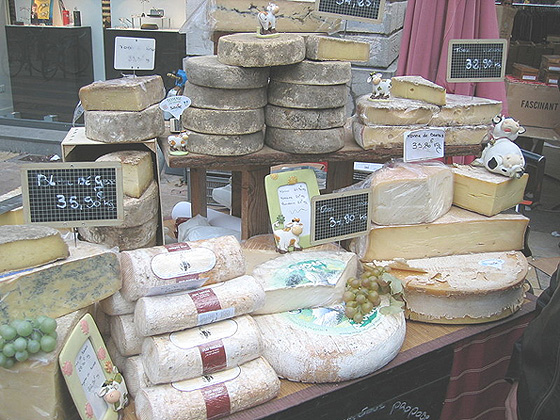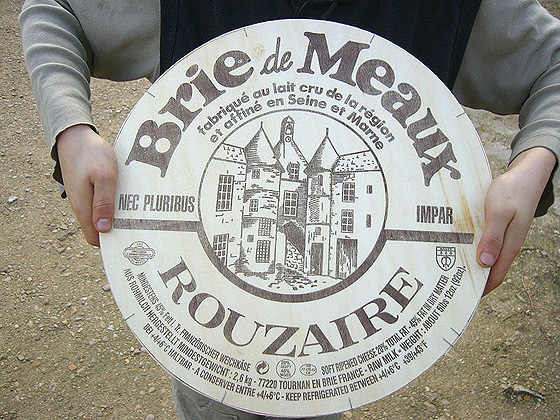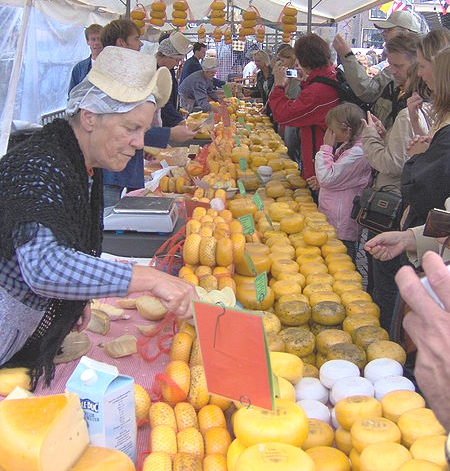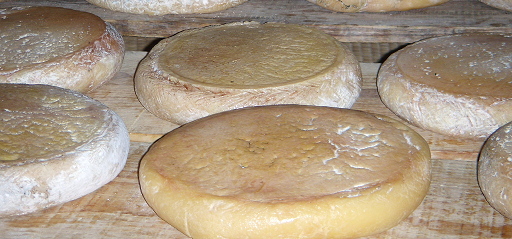Cheese
by Andrew Boyd
Today, say "cheese." The University of Houston's College of Engineering presents this series about the machines that make our civilization run, and the people whose ingenuity created them.
Fromage. Queso. Formaggio. Whatever you call it, cheese is a marvel of engineering techniques developed over generations.
The easiest way to make cheese is to let milk go sour. That's almost certainly how cheese-making began, long before recorded history. When sour, milk curdles — separating itself into a solid part called curd, and a liquid part, called whey. Curd from sour milk is an edible form of cottage cheese.
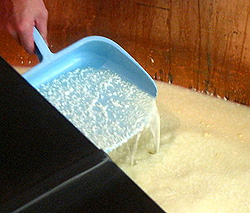 Historically, recognizing that curdled milk can be safely consumed was very important. It meant that much of milk's nutrition could be stored beyond the life of the milk itself. But cottage cheese can be overrun with mold in a matter of weeks. If curds were to remain edible for longer periods, refinements were needed.
Historically, recognizing that curdled milk can be safely consumed was very important. It meant that much of milk's nutrition could be stored beyond the life of the milk itself. But cottage cheese can be overrun with mold in a matter of weeks. If curds were to remain edible for longer periods, refinements were needed.
Cheese-makers don't usually wait for milk to sour. They get their curds and whey by making the milk sour, usually by adding a small amount of rennet — enzymes from animal stomachs. But vinegar, lemon, or wine will do just as well. At various times in history, the whey from mixing wine and milk was considered a desirable beverage, much like coffee or tea.
But back to the curds. Moisture promotes the growth of unwanted mold and bacteria. So some of it's removed by hanging or heating or pressing the curds. Brie holds a lot of moisture and lasts only a few months. Drier Parmesan can last for years.
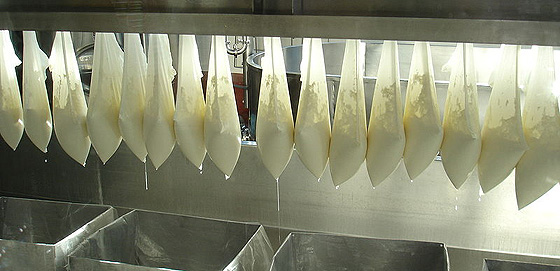
Once the desired amount of moisture is removed, the curds are molded and a cheese is born. Salt or other additives may be used. But the world's finest and oldest cheeses have little or nothing added to them. They take their flavor from the qualities of the milk and from how the cheese is aged.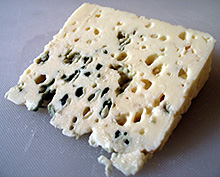
Temperature and humidity are important for the aging of all cheeses. Some cheeses, like Limburger, are regularly washed in brine or spirits. Other cheeses are purposely infused with mold. Penicillium roqueforti from caves in southern France gives Roquefort its distinctive color and taste. Penicillium candidum graces the exterior of Camembert — a cheese once issued as part of field rations for French troops. 
And then there's the simplest element of aging — how long. Microbes and enzymes are constantly at work inside cheese, breaking down proteins and milk fat. An aging cheese is a wondrous natural factory, creating some of the most complex flavors on earth.
Of course, a fine cheese goes best with a crusty loaf of bread and a good bottle of wine — two other foods that've benefitted from millennia of "field" engineering. Ancient foods indeed. And still some of life's greatest pleasures.

I'm Andy Boyd at the University of Houston, where we're interested in the way inventive minds work.
(Theme music)
K. Masui and T. Yamada. French Cheeses. London: Dorling Kindersley Ltd., 1996.
Cheese. Taken from the Wikipedia web site: en.wikipedia.org/wiki/Cheese. Accessed September 14, 2009.
All pictures are from Wikimedia Commons.
